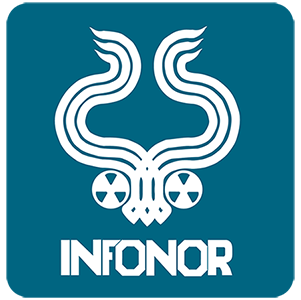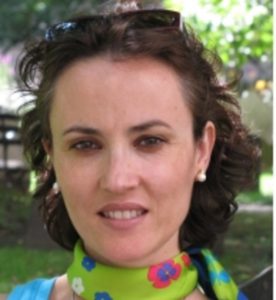
Dra. Inmaculada Rodríguez Santiago
Universitat de Barcelona. España.
Not available.
The Dra. Inmaculada Rodríguez Santiago is associate professor and member of CLIC, a research group recognized by the Generalitat de Catalunya (Spain), and WAI research group (http://www.ub.edu/wai/) in the Facultat de Matemàtiques i Informàtica of the Universitat de Barcelona (UB). Her area of research focuses on human-computer interaction, particularly in virtual 3D environments, virtual agents, gamification and game-based learning. During her scientific career, she has published more than 50 publications in conferences’ proceedings, 15 papers in journals, 10 book chapters, supervised doctoral theses, master thesis, and final year graduate projects. She has been part of the research team of different projects such as ‘Agreement technologies ‘,’ Engineering self- * virtually embeded Systems ‘,’ Serious games for surgery training cardiac ‘,’ Robust virtual collaborations ‘and’ Collectiware. Dr. Rodríguez is part of the scientific comitte of different conferences and magazines in her research area. She has recognized by the spanish government two periods (‘sexenios’) of research, the last one being active. In relation to her teaching background, she started as lecturer in 1995 and, up until now, she has teached subjects such as programming, introduction to computers, operating systems, and human computer interaction.
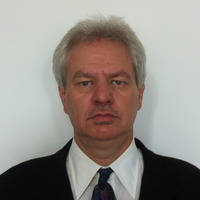
Dr. Carlos Becker Westphall
Federal University of Santa Catarina. Brazil.
Authentication of restricted memory devices presents significant problems since memory consumption is high in mutual authentication using cryptographic protocols in IoT environments. The development of a multi-factor mutual authentication method that can be used in fog and cloud computing remains a challenge, according to previous studies. The present work aims to improve a method of mutual authentication with multi-factor using an adjustable variable response time, challenge-response function, and nonce. So, with these factors, the same method can be regulated for both the Fog and Cloud Computing contexts. In the Internet of Things (IoT) systems, information of various kinds is continuously captured, processed, and transmitted by systems generally interconnected by the Internet and distributed solutions. Attacks to capture information and overload services are common. This fact makes security techniques indispensable in IoT environments. Intrusion detection is one of the vital security points, aimed at identifying attempted attacks. We present an intrusion detection architecture that operates in the fog computing layer. It has two steps and aims to classify events into specific types of attacks or non-attacks, for the execution of countermeasures. Our work presents a relevant contribution to the state of the art in this aspect. We propose a hybrid binary classification method called DNN-kNN. The approach is based on Deep Neural Networks (DNN) and the k-Nearest Neighbor (kNN) algorithm.
Carlos Becker Westphall is Full Professor (since 1993) in the Department of Informatics and Statistics at the Federal University of Santa Catarina – Brazil, where he acts as the leader of the Network and Management Laboratory and also coordinates some projects funded by the Brazilian National Research Council (CNPq). Obtained a degree in Electrical Engineering in 1985 and a M.Sc. degree in Computer Science in 1988, both at the Federal University of Rio Grande do Sul, Brazil. Obtained a D.Sc. degree in Computer Science (Network Management) at the Université Paul Sabatier, France, in 1991. He is the author and/or co-author of more than 500 publications. He is (and was) a member of the Editorial Board of more than a dozen journals. Serves (and has served) as a member of the organizing and/or program committee for hundreds of conferences. Has experience in Computer Science and Telecommunications, with emphasis on Administration and Management of Networks and Services, acting mainly on the following themes: security, autonomic computing, cloud computing and Internet of Things. He founded the LANOMS conference (Latin American Network Operations and Management Sym- posium). He also provided services: for IEEE acting on CNOM (Committee on Network Operation and Management); for IFIP acting in “WG6.6 – Management of Networks and Distributed Systems”; to Elsevier as editor of COMNET (Computer Networks Journal); and to Springer as senior editor at JNSM (Journal of Network and Systems Management).

Dr. Xavier Ferré
Universidad Politécnica de Madrid. España.
The World Health Organization (WHO) defines healthy aging as the process of developing and maintaining the functional capacity that enables well-being in old age. This definition emphasizes that healthy aging is more than just being disease-free. It is also about maintaining the functional capacity that allows older people to maintain their autonomy and perform the activities that enable them to meet their basic needs: to learn, grow and make decisions; to be mobile; to establish and maintain relationships; and to contribute to society. Technology can make a significant contribution to achieving these goals, but it must be designed in such a way that older people can use it and that their user experience (UX) is positive.
Thus, UX design, understood as the design of everything that contributes to the user experience of a technological solution, is especially relevant for this type of user.
An increasing number of older people are accessing technology, especially through their mobile devices, such as cell phones and tablets. Mobile technologies can be key to supporting healthy aging, so that people can maintain a functional and cognitive capacity that allows them to live independent and fulfilling lives well into older age.
This conference will present how technology can contribute to healthy aging. The use of technology by the elderly will be discussed, in order to dispel preconceived ideas that this type of users cannot or do not want to use mobile devices. The characteristics that mobile applications aimed at these users should have will be identified, and the solutions developed by the Ageing Lab of the Biomedical Technology Center of the Polytechnic University of Madrid to monitor frailty with Internet of Things technologies and mobile applications will be presented.
Xavier Ferré has a Licentiate degree in Computer Science from the UPM (1996) and a PhD from the UPM (2005). He teaches as Contract Professor at the Department of Computer Languages and Systems and Software Engineering, Escuela Técnica Superior de Ingenieros Informáticos (UPM) where he has been Vice-Dean of Students (2004-2012) and Sub-Director of Internationalization (2016-2021). He has served as Director of the “Master Universitario en Ingeniería del Software – European Master in Software Engineering”, UPM (2011-2012); of Coordinator of the Educational Innovation Group “Captación, Orientación y Acogida de Estudiantes” since its creation in 2010; and Director of the Chair UPM-El Mundo de Comunicación Digital (2013-2017). Since 2021 he is Director for Asia of the UPM.
He is a researcher at the Active Ageing Lab of the Center for Biomedical Technology (CTB) of the UPM since 2015. He has given tutorials at the two main conferences in his research field (Human-Computer Interaction and Software Engineering): ACM Intl. Conference on Human Factors in Computing Systems (CHI 2011) and the Intl. Conference on Software Engineering (ICSE 2006). He has participated as invited speaker in the VI Jornadas Iberoamericanas de Ing. del Software e Ing. del Conocimiento (JIISIC’07), in the International Conference on Information, Business and Education Technology (ICIBET 2013) and in the Jornada de Investigación Sanitaria de la Comunidad de Madrid 2017.
He has been hired by the government of the People’s Republic of China as a High-End Foreign Expert to carry out a research collaboration with Tongji University in 2015-2017. His main lines of research are usability evaluation automation, in particular Usability and User Experience (UX) analysis in mobile apps; and mobile app design for elderly users, especially in the healthcare field.

Dr. Martín Solari
Universidad ORT Uruguay. Uruguay.
Translation: Technology is not an independent or secondary concept in engineering. On the contrary, technology is fundamental in the production of effective solutions to complex problems. In software engineering, interdisciplinary teams rely on technology and a managed process to produce quality applications.
Technology is not a static concept: it evolves over time, depending on a specific technical and social context. An engineering theory or practice is of little use if it does not have the technology to apply it. Nor is a technology useful by itself, if it does not have a community of professional engineers who can apply it.
As in other branches of engineering, there can be a gap between what the industry applies in its projects and what we teach in software engineering courses. This is a discipline that changes at a high rate and in which the technology comes mostly from industry and the professional community.
In this scenario, one of the main challenges for teaching software engineering is to use an up-to-date technological context. On the other hand, technologies must be selected according to the fundamental software engineering concepts to be taught and in the appropriate pedagogical framework.
Martín Solari is Associate Professor of Software Engineering and Coordinator of the Center for Research and Innovation in Software Engineering (CI3S) at the Faculty of Engineering of Universidad ORT Uruguay. He is Doctor in Software and Systems from Universidad Politécnica de Madrid and Systems Engineering from Universidad ORT Uruguay. He has received scholarships from Fundación Carolina, PDT, ANII and the Erasmus Mundus program of the European Union.
He has worked as a systems developer and consultant in the software processes area. As a teacher he has taught subjects in the following areas: programming, application design, software engineering, software testing, usability and project management. His research areas are: software testing, usability, agility in software startups and experimental software engineering.
He is a level I researcher in the National System of Researchers (SNI) and grade 3 researcher of the Basic Sciences Development Program (PEDECIBA), Computer Science Area. Alternate coordinator of the IS.uy program, which aims to promote Software Engineering in Uruguay through field research and activities to strengthen links between industry, government and academia. He is a member of the executive committee of the Information and Communication Technology for Verticals (ICT4V) and representative for private universities in the National Council for Innovation, Science and Technology (CONICYT) of Uruguay.
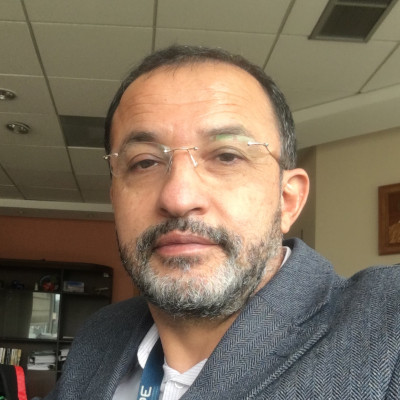
Dr. Efraín Fonseca
Universidad de las Fuerzas Armadas—ESPE, Ecuador.
Forests are home to 80% of terrestrial life; however, they have been seriously threatened as millions of its hectares are lost each year due to forest fires. The aim of this research is to elicit the requirements, methods, techniques, technological elements, situations, and specifications to structure a current, compact, generic, and low-cost technological model that allows early alert or detection of forest fires and provides timely support in decision-making. We carried out a Literature Study of Ecuadorian forest fires’ state of the art through three studies and found that the human factor is crucial in the generation, prevention, control, and mitigation of the impact of FF, emerging technologies are properly handling the forest fires’ issues and a decrease of 16.13% of burned hectares from 2018 to 2020; however, there was an increase of 17% from 2019 to 2020. As conclusions, we found that forest fires represent an unprecedented danger to life, so there is a broad range of possibilities for their early detection since time ago. Emerging technologies give the science new alternatives to develop compact, economic, accessible, and functional proposals for early warning about this phenomenon.
Efraín R. Fonseca C. received the Ph.D. degree, in 2014. He has ten years of IT industry experience as a Consultant. He is currently a Full Professor with the Universidad de las Fuerzas Armadas—ESPE, Ecuador. Among his research interests include the research process in empirical software engineering, research methods in empirical software engineering, object-oriented analysis, design and development of ontological representations in software engineering, information security, and new emerging technologies, such as the Internet of Things (IoT).

Mg. Ing. Abraham Dávila Ramón
Pontificia Universidad Católica del Perú (PUCP), Perú.
Translation: In 2011, the publication of the ISO/IEC 29110 series of standards began, which proposes a set of process profiles that small organizations (up to 25 people) can adopt to improve their competitiveness. In Peru, as part of the ProCal-ProSer Project between 2013 and 2016, a Software Process Improvement Project Program was carried out involving 10 micro software development companies, where final year students, from the computer engineering program; supported the implementation of the Basic software engineering profile (ISO/IEC 29110-5-1-2). The Project has allowed several results in the University-Business collaboration and has allowed the realization of several positive externalities and lessons learned at the level of the implementation of the model and the project program.
Abraham Dávila is a Principal Professor of the Computer Engineering program at the Pontificia Universidad Católica del Perú and is a Doctoral Candidate in Software Engineering, in the field of process improvement.
He participates as Secretary of the Technical Committee of Standardization in Software Engineering and Information Systems before INACAL, the Peruvian standardization body and is a member of JTC1/SC7 WG24 IT Technical Committee, software engineering subcommittee and working group 24 in charge of the development of standards on profiles (software and systems life cycle processes) for small organizations (up to 25 people) that develop software and systems.
He has carried out research projects in the software industry with funds from different sources in Peru. The projects, successively, have allowed the realization of Software Process Improvement Projects Programs (PPMPS) between 2006 and 2020; where MoProSoft software process models have been implemented in the COMPETISOFT project, ISO/IEC 29110 in the ProCal-ProSer Project and a Services model for small organizations in ProCal-ProSer. In the PPMPS, work has been done with undergraduate and graduate students and professors from the participating universities. Papers have been published in conferences and journals. Students have been oriented to obtain their master’s degrees and professional engineering degrees.

PhD. Danilo Martínez Espinoza
Universidad de las Fuerzas Armadas ESPE, Ecuador.
Translation: Mobile application development over the last decade has seen a significant increase in its share of the software market. While there are specific characteristics that separate it from traditional software development, there is a lack of guidance on the issues encountered during the mobile software development process. In order to define a mobile application development framework that considers the specific characteristics of mobile application development, we conducted three empirical studies that allowed us to identify the main trends in the mobile application software process and to discover the main challenges for application development. We have organized the findings into a framework that integrates the specific challenges of mobile development that we have called Mobile Ilities, with software development activities that are linked through an agile process. The results of initial testing with computer science undergraduate students are encouraging. Our approach has guided novice developers throughout the process of creating a final product, combining developers’ existing knowledge of Scrum and XP with the specific characteristics of mobile development, and providing mechanisms for linking these characteristics with elements of the development process.
Danilo Martínez Espinoza is a Systems Engineer (2001) from Escuela Superior Politécnica de Chimborazo (Riobamba – Ecuador), Master in Software & Systems (2013) and PhD in Software, Systems and Computing (2020) from Universidad Politécnica de Madrid (Spain). He is a research professor in the Department of Computer Science at the University of the Armed Forces ESPE in Quito-Ecuador. He has held several management positions at the university, such as Director of the Systems and Computer Engineering Career (2009-2011), member of the Honorable Academic Council of ESPE (2009-2011) and Research Coordinator of the Computer Science Department (2013-2015) of ESPE.
He has participated as reviewer in several international scientific conferences and scientific journals. He is a member of the Editorial Committee of the electronic journal RECIBE of the University of Guajadalara (Mexico). Currently, he is editor of the scientific journal GEEKS DECC Report of the Computer Science Department of the Universidad de las Fuerzas Armadas ESPE and Coordinator of the Software Development Club of ESPE.
His areas of interest are software engineering, app development process, multimedia, human-machine interaction, user experience, usability, graphic design and ICT in education. He has directed several undergraduate and graduate theses. He is author of 12 papers in international conferences and a JCR Q1 journal in the area of software engineering.

Dr. Gabriel García Mireles
Universidad de Sonora, México.
Translation: Sustainable development is a topic of interest to all scientific disciplines, including computer science. The purpose of this talk is to present the main advances in the study of environmental sustainability in the area of software engineering. In particular, the concept of environmental sustainability and its relationship with the quality of application software will be addressed considering two perspectives: product quality and process quality. From the product quality perspective, some relationships between sustainability goals and the product quality characteristics described in the ISO/IEC 25010 standard are described. Considering the process perspective, the main methods proposed to address sustainability aspects at various stages of the software life cycle are described. In addition, based on the ISO/IEC 29110 standard, a set of tasks that are related to environmental sustainability is presented.
Gabriel Alberto García Mireles is currently a full professor at the University of Sonora and is attached to the Department of Mathematics where he teaches subjects in the area of software engineering that make up the undergraduate program in Computer Science. He received his Ph.D. degree in Advanced Information Technology from the University of Castilla – La Mancha. His research work focuses on studying software quality considering the impact of software process improvement initiatives on software product quality. In the last decade, he has studied the areas of opportunity offered by software lifecycle process standards to address the product quality characteristics described in ISO/IEC 25010. He has focused his attention on identifying quality characteristics that are relevant to software products developed by very small companies. In addition, he has investigated the relationship between sustainable development practices and software quality. Other topics he has explored are related to accessibility and gamification. He has published articles in journals and conference proceedings in the area of software engineering, both of which are international in scope.
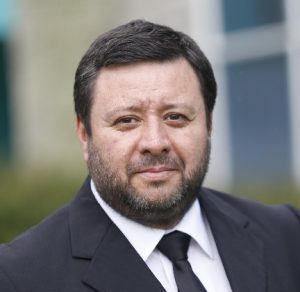
Dr. Marco Mora Cofré
U. Católica del Maule, Talca, Chile.
Translation: Fingerprints are widely used in biometric identification, because they allow distinguishing people in a robust way and because of the low cost of the technology associated with their capture. It is well known that fingerprints can be classified into five main categories: Arc, Tent Arc, Left Loop, Right Loop, and Whorl. Automatic fingerprint-based person recognition requires the comparison of an input fingerprint with a large number of fingerprints in a database. Grouping fingerprints according to their class allows to reduce the database search time, since the search is performed on groups of fingerprints with fewer samples. However, when in the presence of a huge database (for example, the FBI database contains more than 70 million fingerprints), fingerprint classification is very costly in terms of memory and time. On the other hand, Extreme Learning Neural Networks (ELM) are being widely studied because they have similar performance levels to traditional classifiers such as Backpropagation Networks (MLP) and Support Vector Machines (SVM), but present a much faster training algorithm. The present talk shows the first scientific results of the Fondecyt Regular 2020 Very Large Finger Classification based on a Fast and Distributed Extreme Learning Machine Neural Network project, which has as main objective to develop a fingerprint classification method based on an ELM network trained with millions of samples. The developed method allows training an ELM classifier with 18 million fingerprints in reasonable times and high performance levels.
Dr. Marco Mora received a degree in Electronics Engineering and a Master’s degree in Electrical Engineering from the Universidad de Concepción, Chile, in 1998 and 2004, respectively; and the degree of Doctor of Computer Science from the Instituto Nacional Politécnico de Toulouse (INPT), University of Toulouse, France, in 2008. He is currently a professor at the Department of Computer Science and Industry, Director of the Technological Research Laboratory at Recognition of LITRP Patterns, from the Universidad Católica del Maule, Chile, and President of the Chilean Association for Recognition of ACHIRP Patterns for the period 2021-2024. His research interests are Digital Image Processing, Neural Networks, Biometrics, and Pattern Recognition applications.
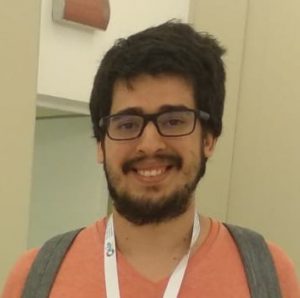
Dr. Eduardo Aguilar Torres
U. Católica del Norte, Antofagasta, Chile.
Translation: Remarkable improvements have been evidenced in the last decade with the appearance of deep learning models on a wide diversity of problems. On the other hand, the good performance observed with this type of algorithm is not always reflected when using them in real environments. Particularly for critical problems, it is mandatory to be aware of the reliability given to the predictions generated to avoid catastrophic results. In this talk we will discuss the importance of modeling uncertainty to understand what our model learned or did not learn and also to be able to assign a degree of certainty to our predictions. To do so, we will describe one of the most popular techniques used in the deep learning framework, MC-Dropout, and show in practice its implementation on a well-defined problem.
Eduardo Aguilar Torres is a Doctor in Mathematics and Computer Science from the Universidad de Barcelona under the tutelage of Dr. Petia Radeva. He is a Civil Engineer in Computing and Informatics and a Master’s in Computer Engineering from the Universidad Católica del Norte. He is currently an academic in the Department of Computer and Systems Engineering at the Universidad Católica del Norte. His main interest is in the research and application of Deep Learning algorithms for visual food analysis. He aims to contribute to improving the quality of life of people through the generation of technological solutions based on Machine Learning and Computer Vision.

Dr. Chris North
Virginia Tech in Blacksburg, VA, USA.
Explainable AI seeks to unmask the underlying details of black box learning algorithms, enabling these algorithms to explain their state and results to human analysts. However, to truly enable human-AI interaction, we will argue that there exists a second black box representing the cognitive process of the user, containing information which must be communicated to the algorithm. Using this “Two Black Boxes” problem as motivation, we propose a design philosophy for human-AI interaction. We discuss challenges associated with each phase of communication between the pair of cooperatively-learning entities and the benefits that emerge from combining the capabilities of human and AI.
Dr. Chris North is a Professor of Computer Science at Virginia Tech in Blacksburg, VA, USA. He is Associate Director of the Sanghani Center for AI and Data Analytics (https://sanghani.cs.vt.edu), and leads the Visual Analytics research group (http://infovis.cs.vt.edu). He was principle architect of the GigaPixel Display Laboratory, one of the most advanced display and interaction facilities in the world. He has served as General Co-Chair of IEEE VIS, and as Papers Co-Chair of the IEEE Information Visualization (InfoVis) and IEEE Visual Analytics Science and Technology (VAST) Conferences. He served on editorial boards of IEEE Transactions on Visualization and Computer Graphics (TVCG) and the Information Visualization journal. He was awarded over $15M in grants, co-authored over 125 peer-reviewed publications. As a leader in data science education at VT, he founded the Graduate Certificate in Data Analytics, and co-organized the Computation Modeling and Data Analytics (CMDA) major. His research and education agenda seeks to enable human-AI interaction for big data analysis. Citations in Google Scholar: http://scholar.google.com/citations?user=yBZ7vtkAAAAJ
